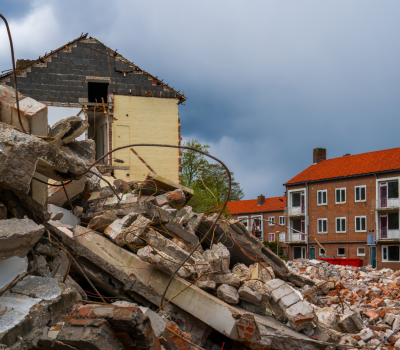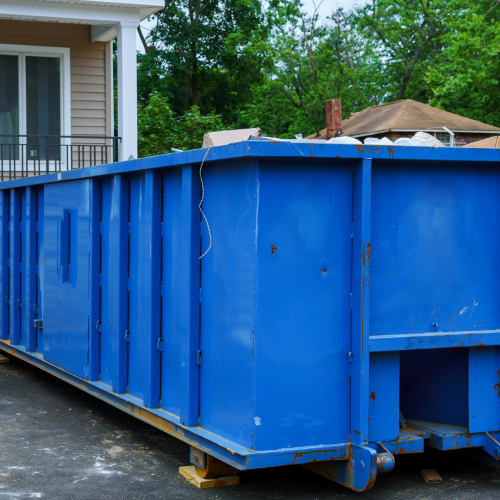Demolition Done Right: Tips for a Smooth and Safe Process
Embarking on a demolition project can be daunting, but with the right approach, it can also be a smooth and safe process. Whether you’re tearing down a small structure or tackling a larger building, careful planning and execution are essential. In this blog, we’ll explore key tips and strategies to ensure your demolition project is done right from start to finish.
From obtaining the necessary permits to hiring experienced professionals, every step of the demolition process requires attention to detail. Safety should always be the top priority, both for workers and bystanders. We’ll delve into safety protocols, including proper equipment usage and debris management, to minimize risks and prevent accidents.
Additionally, we’ll discuss the importance of environmental considerations, such as waste disposal and recycling efforts, to minimize the project’s impact on the surrounding area. With these tips in mind, you can approach your demolition project with confidence, knowing that you’re prepared for a smooth and safe process.
Understanding the Importance of Planning in Demolition Projects
Demolition projects require meticulous planning to ensure they are executed smoothly and safely. Proper planning not only helps in achieving the desired outcome efficiently but also minimizes risks and potential setbacks. In this blog post, we will delve into the critical importance of planning in demolition projects and outline key considerations that should be addressed during the planning phase.
- Site Assessment: Before initiating any demolition project, a comprehensive site assessment is essential. This involves evaluating the structural integrity of the building or structure to be demolished, identifying potential hazards such as asbestos or lead-based paint, and assessing environmental factors like soil contamination or nearby water sources. A thorough site assessment provides valuable insights into the specific challenges and requirements of the project, guiding subsequent planning efforts.
- Obtaining Necessary Permits: Demolition projects often require permits from local authorities to ensure compliance with building codes, zoning regulations, and environmental standards. Planning ahead to obtain these permits is crucial to avoid delays or legal complications during the demolition process. Understanding the permit requirements and timelines associated with each regulatory agency enables project managers to plan effectively and obtain approvals in a timely manner.

- Creating a Comprehensive Demolition Plan: A well-defined demolition plan serves as a roadmap for the entire project, outlining the sequence of activities, safety protocols, and resource allocation. This plan should address key aspects such as demolition methods, waste management strategies, site access and egress, and emergency procedures. By carefully planning each phase of the demolition process, project teams can anticipate potential challenges and proactively implement solutions to ensure a smooth and efficient execution.
- Budgeting and Resource Allocation: Effective planning also involves budgeting and resource allocation to support the successful completion of the demolition project. This includes estimating costs for labor, equipment, materials, waste disposal, and any additional expenses that may arise during the project. By accurately forecasting the project budget and allocating resources accordingly, project managers can minimize financial risks and optimize the utilization of available resources.
- Coordination with Stakeholders: Demolition projects often involve multiple stakeholders, including property owners, contractors, regulatory agencies, and the surrounding community. Effective communication and coordination among these stakeholders are essential for ensuring project success. Planning should include mechanisms for regular updates, feedback, and collaboration to address concerns, mitigate conflicts, and maintain transparency throughout the demolition process.
- Risk Assessment and Mitigation: Identifying and mitigating risks is a critical aspect of demolition project planning. This involves conducting thorough risk assessments to identify potential hazards and vulnerabilities, such as structural instability, environmental contamination, or safety hazards for workers and the public. Once risks are identified, appropriate mitigation measures should be implemented to minimize their impact and ensure the safety of all involved.
The Role of Environmental Considerations in Demolition
Demolition projects, by their very nature, involve significant alterations to the built environment. From tearing down structures to clearing sites for new developments, these activities can have far-reaching environmental implications if not carefully managed. Recognizing the importance of environmental considerations in demolition is crucial for minimizing negative impacts and promoting sustainable practices. This blog post explores various aspects of environmental consciousness in demolition projects and highlights strategies for mitigating environmental harm while achieving project objectives.

Waste Management
One of the foremost environmental concerns in demolition is the generation of waste materials. Demolition activities produce a wide range of debris, including concrete, wood, metal, and hazardous materials like asbestos and lead-based paint. Improper disposal of these materials can result in pollution of land, water, and air. Effective waste management strategies, such as sorting materials for recycling, salvaging reusable components, and properly disposing of hazardous substances, are essential for reducing the environmental footprint of demolition projects.
Hazardous Material Removal
Many older structures slated for demolition contain hazardous materials that pose risks to both human health and the environment. Asbestos, in particular, is a common concern due to its widespread use in building materials prior to its ban. During demolition, these hazardous materials must be identified, contained, and safely removed to prevent their release into the
environment. Employing certified professionals and following established protocols for handling and disposing of hazardous materials is critical for protecting workers and minimizing environmental contamination.
Dust and Noise Control
Demolition activities can generate significant amounts of dust and noise, which can pose health hazards and disrupt surrounding communities. Dust containing particulate matter and other pollutants can exacerbate respiratory problems and contribute to air pollution. Similarly, excessive noise can cause hearing damage and nuisance to nearby residents. Implementing measures to control dust and noise emissions, such as using water sprays, enclosures, and sound barriers, can help mitigate these impacts and maintain a healthier and more livable environment during demolition.
Site Remediation and Restoration
Once demolition activities are complete, it’s essential to address any environmental damage caused by the project and restore the site to its original condition or prepare it for future use. This may involve soil remediation to address contamination, re-vegetation to prevent erosion, and restoration of natural habitats. Additionally, integrating green infrastructure elements, such as permeable paving and rain gardens, can help mitigate stormwater runoff and enhance the site’s environmental performance. By prioritizing post-demolition remediation and restoration efforts, stakeholders can ensure that the site remains ecologically sound and contributes positively to the surrounding environment.
Regulatory Compliance
Environmental regulations governing demolition activities vary widely depending on location and project specifics. It’s essential for project stakeholders to familiarize themselves with applicable environmental laws and obtain necessary permits before commencing demolition work. Compliance with regulations not only helps avoid legal penalties but also ensures that environmental risks are adequately addressed and minimized throughout the project lifecycle.
Conclusion
JUNKAHAULICS – Raleigh, we are dedicated to ensuring that every demolition project is executed with precision, efficiency, and above all, safety. Our comprehensive approach, coupled with years of experience in Raleigh, North Carolina, guarantees a smooth and secure process for our clients. From meticulous planning to meticulous execution, we prioritize the safety of our team and the integrity of the surrounding environment. With our commitment to excellence, clients can trust us to handle their demolition needs with expertise and professionalism, making us the premier choice for demolition services in the United States.




